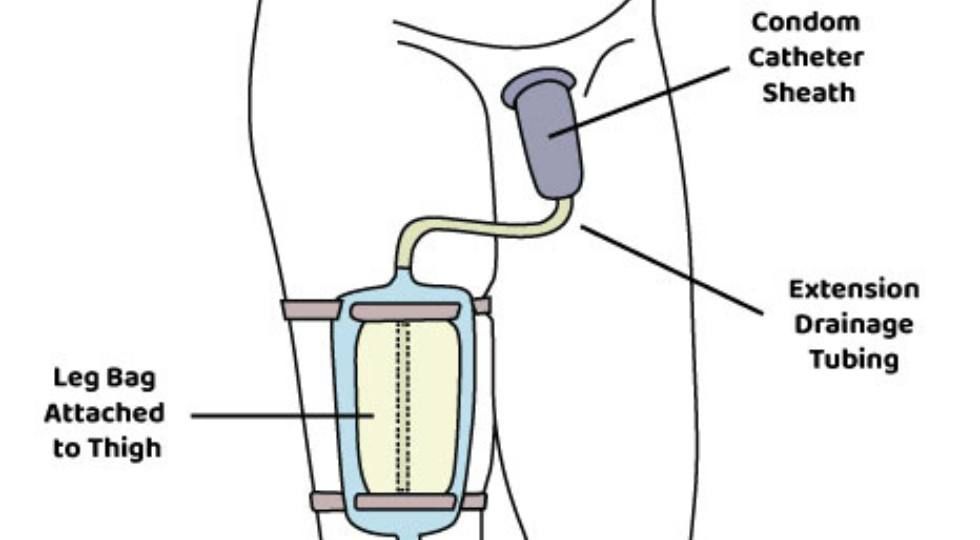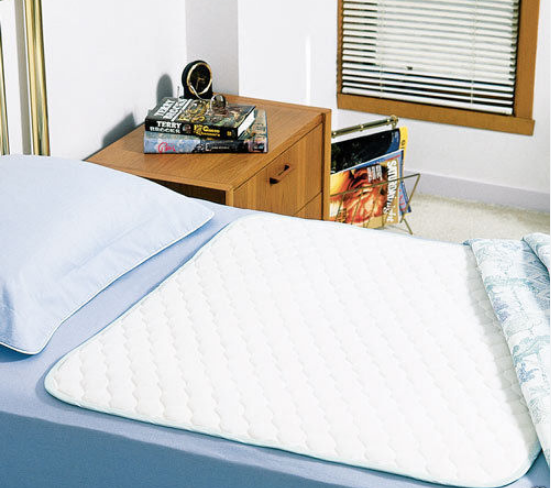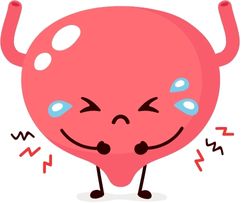Managing Incontinence
Incontinence, the loss of bladder or bowel control can be a frustrating and isolating experience. Additionally, for men, it can feel especially stigmatised. Whether it is a chronic issue or has come on recently (commonly due to a prostatectomy), it can have significant impacts on a man’s physical, mental and social well-being. This blog aims to shine some light on the issues men face with incontinence. Here, we discuss strategies to manage day to day with incontinence to minimise the impact of incontinence on your life to put some control back into your own hands. Stop limiting yourself and get back to doing what you love and living how you would like to live.
Chronic vs. Post-Prostatectomy Incontinence
Chronic incontinence can have various causes, such as weakened pelvic floor muscles from a long history of heavy lifting or constant straining due to constipation; or due to a neurological condition which impacts your ability to control the activation of these muscles. Chronic incontinence is reduced bladder or bowel control that has been ongoing for a long time and has not had much change to the extent of incontinence. It is less likely to improve quickly with intervention and requires a robust management plan to reduce the impacts of incontinence on your life.
Post-prostatectomy incontinence is a side effect of undergoing a prostatectomy. It is common and men are almost guaranteed to experience some level of incontinence after this procedure. Some men recover more quickly than others based on a range of factors. See more on predicting recovery here.
Taking Charge of Your Health
It’s important to consider the impacts of incontinence on all aspects of your life when planning your day to day life. This might include the following:
- Home life
- Work life
- Social outing
- Exercise and hobbies
- Relationships, intimacy and sex life
- Travel
Modifying Daily Habits
Modifying your daily habits can significantly improve your experience with incontinence by reducing the severity of your leaking and putting you in the driver’s seat. Some options to consider are:
Fluid Management:
Paying close attention to your fluid intake and how you respond can give you good insights into how your continence is affected by varying amounts and types of fluids. As a general guide, aim for around 8 glasses of water per day, but adjust based on your activity level, climate, and individual needs. Avoid chugging large amounts at once. Liquid intake should be limited in the few hours before bed to reduce night time urgency.
Dietary Modifications:
Certain foods and drinks can irritate the bladder and worsen symptoms. Consumption of these foods may cause you to experience overactive bladder and urge incontinence. Consider investigating your consumption of the items below:
- Caffeine: Found in coffee, tea, soda, and some chocolate.
- Alcohol: While occasional drinks might be okay, excessive alcohol intake can irritate the bladder and worsen incontinence.
- Spicy foods: Capsaicin, the compound that gives chili peppers their heat, can be a bladder irritant for some men.
- Acidic drinks: Citrus juices, tomatoes, and some carbonated beverages can aggravate the bladder. Experiment and see if these trigger your symptoms.
- Artificial sweeteners: While not confirmed for everyone, some artificial sweeteners may irritate the bladder in some individuals.
The effects these foods have are very individual, meaning different people may have different reactions to them. It is important to explore which foods may be exacerbating your symptoms so that you can modify your diet appropriately rather than taking a blanket approach to cutting back everything.
Improving Bowel Health
Constipation can put extra strain on your bladder. Compacted stool can physically push on the bladder wall, causing the bladder muscle tissue to stretch and signal to the brain that there is more fluid present then there actually is. This can lead to premature urges to pee and worsen incontinence. On top of this, constipation can cause difficulty defecating, requiring straining to complete bowel movements. Over time, this can lead to weakened pelvic floor muscles as they have to withstand this extra pressure.
A few strategies to help manage this are:
- Fibre: Include plenty of fibre-rich foods in your diet like fruits, vegetables, and whole grains. Aim for around 25-35 grams of fibre daily.
- Hydration: Staying hydrated helps keep stools soft and easier to pass. Drink plenty of water throughout the day. Trying to manage this with the above fluid recommendations can be challenging. It may take a bit of trial and error to determine what’s right for you.
- Regularity: Try to establish a regular bowel movement schedule. Aim to go at roughly the same time each day, such as every morning after breakfast.
- Consider laxatives: If your constipation is severe, and not improving after trying some of the above strategies to manage it, laxatives might be considered. It is recommended that you consult your doctor or pharmacist before taking them.
Planning and Preparation
Incontinence Products
There are many incontinence products available, so it can be tough to decide what’s right for you. Positively though, it gives you lots of options to choose from. There are several levels of absorbency which varies with different manufacturers.
- Disposable pads - these are readily available at supermarkets and pharmacies. They are very convenient to use but can be expensive.

Disposable Incontinence Pad
Reusable pads - A good option as they are cheaper in the long run, but require more time investment for washing, etc. They usually require replacing every 6-12 months.

Reusable Incontinence Pad (pants style)
Sheath drainage - Some men prefer a sheath (condom) drainage system instead which fits over the edge of the penis and drains into a bag attached to the led. This can be useful for men suffering with more severe leakage which be overwhelming for some pads or be uncomfortable. It will require emptying of the drainage bag periodically.

Sheath Drainage System
Bed and chair pads. There are absorbent pads that are made to fit on chairs or mattresses. They have a waterproof backing that prevents the urine from leaking through the pad into the material of the chair or mattress. This can be valuable for lengthy car trips and overnight and at night time.

Bed Pad Over Mattress
- It is important to find the right fit and absorbency level for your needs. A men's health physiotherapist or continence nurse can recommend suitable products.
- As a last resort, a catheter might be required to help manage your incontinence. This is an invasive option that uses a hollow tube that drains directly from the bladder into a bag. This may also be used at night using a larger drainage bag.
- Check out this video from Continence Australia all about continence products, general advice from a continence nurse and a continence advocate, including experiences shared by those living with incontinence.
Mapping Public Restrooms
- If you're using incontinence products, plan ahead when you're out and about. This can reduce stress and anxiety about leaving the house, which will help make it more likely for you to get out there and engage with the world. It is a common problem that incontinence will make people reluctant to leave the house, which can become socially isolating. There are apps and websites specifically designed to help you locate public restrooms. Here are some additional tips:
- Before you leave: Plan your route and identify restrooms along the way, especially on long trips or unfamiliar areas.
- Carry a restroom kit: Pack a small bag with supplies you might need, such as extra incontinence products, wipes, hand sanitizer, and a change of clothes (in case of leaks).
- Consider discreet carrying cases: There are discreet carrying cases available for incontinence products to maintain privacy and confidence.
- Skin Care: One thing you may not have considered is the irritation to your skin. The constant moisture from leaks can irritate the skin around your genitals. Here's how to protect your skin
- Change frequently: Change incontinence products as soon as they become wet or soiled to minimize skin irritation.
- Gentle cleansers: Use lukewarm water and gentle cleansers to clean the area. Avoid harsh soaps or rubbing as this may cause further irritation to the area.
- Barrier creams: Apply a barrier cream to protect the skin from irritation caused by moisture.
How can a Men's Health Physio help you with this?
Men's health physios are trained in all things continence and will help you manage this by addressing multiple facets. Firstly, they can provide advice on managing day to day with incontinence. You can work together with your men's health physiotherapist to express your individual concerns about incontinence and how it is impacting you so that a personal approach can be taking to addressing your own needs. You will receive advice/insight on causal factors of your incontinence and provided strategies in trying to improve the severity of your leaking. Typically, this will involve engaging in Pelvic Floor Muscle Training (PFMT) which will be prescribed by your physiotherapist if required. Learn more about PFMT here. Seeing a men's health physiotherapist will arm you with knowledge about your experience/condition, which gives you more control over managing it. At the very least, knowing why something is occurring makes you feel more at ease about the situation. For more about men's health at Sycamore Health visit this page and book an appointment with James and Dave, our excellent men's health physiotherapists.





